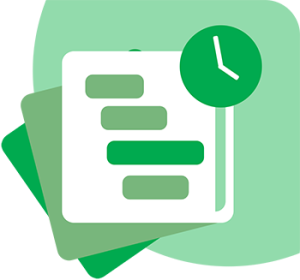What about taxes on investments?

When you start investing, of course you hope to get returns from it, and eventually build a larger wealth. Financial independence here we come! Only we have to deal with our friends at the IRS, like always when it comes to money. And also your assets are something you have to pay taxes on. And it goes just a little differently than you are used to from “standard” income from, say, employment or a business. In this article, we take you through the world of taxes on investments in 2023. Tip: save the article so you can read it back, as the material requires repetition to stick!
This article in written by co-founder of Paperdork Nikkie den Dekker. Find out more about Paperdork here.
What about your taxes on investments?
Generally, with investments, you have to start paying taxes in “Box 3. You can find these with your income taxes. But first take a step back regarding taxes on investments. The Netherlands has 3 boxes in the tax system.
- Box 1: The first box includes all your income from employment or profits from a business.
- Box 2: The second box consists of profits from substantial interest, or when you have more than 5% shares in a company (e.g., a private limited company). We’ll come back to that later.
- Box 3 contains all your income from savings and investments. So investments fall into the latter category. Box 3 is generally seen as the most favorable box: namely, you pay taxes on a notional return, while in many cases you actually get a higher return if we look at past years.
There are some exceptions, though. You just read that if you have more than 5% shares in a company that this income falls into box 2. But don’t worry. If you invest through large brokers, such as Robeco, Degiro or SAXO, you can assume that you will not hold more than 5% of the shares. Another exception is if you are really heavily involved in investing, then at some point the IRS may see it as an entrepreneurial activity.
How much tax do you pay on investments?
Okay, so for a moment we’ll assume you pay taxes in Box 3. In that case, you pay wealth tax. But the nice thing is that there is a portion of so-called tax-free wealth. That is, you do not yet have to pay taxes on this first amount you save. In 2023, the tax-free wealth for a person without a tax partner is €57,000, and with a tax partner is €114,00 (in which case your wealth is also added together). It is often mistakenly thought that once you go above this amount, you start paying taxes on the entire amount. So that is not the case.
Are you above the tax-free assets? Then you start paying capital gains tax. The IRS assumes that you receive a return on the assets in Box 3. Another premise they have is that the more power you have, the more return you receive. On your return, you will pay 32% income tax in 2023. But note that they don’t calculate your actual return. The Internal Revenue Service determines a notional return.
Important! Update tax change Box 3 in 2023!
In late 2021, there was a Supreme Court ruling that has a major impact on the operation of Box 3. In this box, you pay taxes on your assets. Think savings, investments and crypto assets. Starting in 2023, the way to calculate whether and how much wealth tax you have to pay will change. In the past, a notional return on your total assets was calculated. Starting in 2023, the actual distribution of your assets between savings, investments and debt will be distinguished. The IRS will then calculate with rates of return that are closer to reality. In other words, there is little return on savings right now, while returns on investments are generally higher. The tax-free capital, the portion of your assets on which you do not pay tax, is increased to €57,000 (without a tax partner). The tax rate in Box 3 does increase 31% to 32%.
Note! Because Box 3 will change a lot more in the coming years because of the Supreme Court ruling, and because the Tax Administration itself is pretty caught off guard (and they don’t really know how to fix it yet either), the numbers and percentages are constantly changing. So the calculation example below is no longer up to date, but more current information is not yet available. What you can do is go to the IRS website and use the calculator to see how the tax will be in your situation.
Calculation examples of taxes on investments and assets
To make it all a little easier to understand, we have worked out two calculation examples here. Please note that these calculation examples are illustrative and may vary. For your assets, the IRS will look at what you save and invest, and use a separate notional return for each activity.
Single with €60,000 assets
If you are single, you have a tax-free capital of €57,000. So you may deduct that from your assets. In that case, you are left with €60,000 – €57,000 = €3,000 on which to pay taxes. The notional return on this amount is 1.898% and thus €56.94. You end up taking 32% of that again, which ends up being €17 tax.
Tax partners with €150,000 assets
If you are tax partners, you have a tax-free capital of €114,000. So you may deduct that from your assets. In that case, you are left with €150,000 – €114,000 = €36,000 on which to pay taxes. The first 67% of this amount falls into the first bracket with a notional return of -0.01% and thus: nothing. This leaves €11,880. The IRS assumes a notional return of 6.17% tax. That’s €656.96. You then pay 32% tax on that. That ends up being €210.
Do you have more savings or assets?
Read on the site of the tax authorities
more about how much tax you pay on your assets.
What about the tax on dividends?
When investing through funds, in many cases no dividends are paid. You do receive dividends, but this is sometimes used by the investment party to reinvest immediately and thus achieve even higher returns. Do you still receive dividends? For example, do you invest in dividend stocks and want to use these dividends to live on? If so, this is additional income that is included in Box 3.
In addition, when dividends are paid, dividend tax is often withheld by the distributing party. You can reclaim this withheld tax on your income tax return. Sometimes there is also dividend leakage. Pfff, are you tired of all the difficult terms too ;-)? Either way, read more about what dividend leakage means in this article.
Psst: read all about dividend investing here!
How should you report your investments?
You include your investments in your income tax return. It is important to consider what type of investments you have. When investing through brokers, in most cases all information is automatically forwarded to the Internal Revenue Service. But if you have any other investments – think cryptocurrency – you have to report them yourself. It is important to take screenshots or exports of its value each year on Jan. 1. Suppose you do your income tax for 2022, then the value of your portfolio from Jan. 1, 2022, applies.
WOZ value
For real estate, the WOZ value is decisive, again from Jan. 1. If your property does not have a WOZ value (
for example a recreational house
) then you determine the then current value and include it in your income tax.
Should you have an (investment) mortgage it is also important to declare it. For a mortgage, debt follows possession. A mortgage is a form of debt. If your real estate on which the mortgage sits is in Box 3, it means that your associated mortgage is also in Box 3. And that is often beneficial: what debt you may deduct from the value again. So which means you end up paying less tax.
Want to know more about investing in real estate? Read this article.
What else should you consider?
There are some things that are useful to know around taxes on investments. For example, it is not advisable to invest from your business account if you are a business owner. In fact, the tax authorities may then view investing as a business activity. Rather, you just sit safe in Box 3, and invest from your personal account.
If you thought – or heard somewhere – you were being smart by taking a lot of money out of your account on 31-12, we’re sorry to disappoint you. These days the IRS has access to all your accounts, and even if you take the money “offline” you are required to declare it. Failure to do so is fraud. So not recommended!
Valuable assets: taxes on investments there too?
Should you have other valuable assets besides investments, you must also report them in Box 3. For example, when you trade in precious paintings as an investment. You can find a list of assets that are exempt from Box 3 and therefore do not need to be declared on the Tax Office website.
Investment tax rules are constantly changing. So always make sure you stay informed, whether through a bookkeeper or accountant or not.




